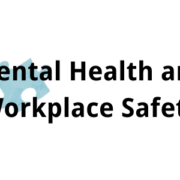The impact of technology on workplace safety
The impact of Technology
Technology has dramatically changed the way businesses operate, and its impact on workplace safety is no exception. From advanced monitoring systems to wearable devices, technology offers new and innovative ways to protect employees and reduce the risk of accidents and injuries. In this article, we will explore some of the ways technology has transformed workplace safety and discuss how organisations can leverage these advancements to create a safer work environment.
With the knowledge and expertise gained from the NEBOSH Diploma in Occupational Health and Safety, safety professionals can effectively navigate the integration of technology into safety management systems. This comprehensive program equips individuals with a deep understanding of health and safety principles, risk assessment, and regulatory compliance, empowering them to identify and implement technology-driven safety solutions. By embracing cutting-edge technologies and leveraging the insights from the NEBOSH Diploma, organisations can enhance safety practices, monitor potential hazards in real-time, and proactively prevent accidents, resulting in a safer, more efficient, and productive work environment.
1. Improved hazard detection and monitoring
Technological advancements have led to the development of sophisticated hazard detection and monitoring systems that can quickly identify potential risks in the workplace. Sensors can detect dangerous gas leaks, temperature fluctuations, and other environmental hazards, enabling organisations to address these issues before they escalate and pose a threat to worker safety.
2. Enhanced personal protective equipment (PPE)
Technology has also played a significant role in improving the effectiveness of personal protective equipment (PPE). Smart PPE, such as connected hard hats, safety glasses, and gloves, can monitor worker fatigue, stress levels, and other vital signs, providing real-time data that can help employers address potential safety concerns before they result in accidents or injuries.
3. Advanced training methods
Virtual reality (VR) and augmented reality (AR) technology have revolutionised workplace safety training, allowing employees to experience realistic simulations of potentially hazardous situations without putting themselves at risk. This immersive training approach can help workers develop a better understanding of the risks they may encounter and the appropriate safety measures they should take.
4. Remote monitoring and communication
Technology has made it possible for employers to monitor worker safety remotely, even in hazardous or hard-to-reach locations. Drones, for example, can be used to inspect work areas that may be difficult or dangerous for employees to access. Additionally, communication tools like GPS tracking and two-way radios can help ensure worker safety in remote locations by allowing for real-time communication and monitoring.
5. Automation and robotics
Automation and robotics have significantly improved workplace safety by reducing the need for humans to perform dangerous tasks. Robots can be used to handle hazardous materials, work in extreme temperatures, or complete repetitive tasks that may cause strain or injury to human workers. By automating these tasks, organisations can reduce the risk of accidents and injuries.
How Technology has an Impact on Workplace Safety
Technology has had a profound impact on workplace safety, offering new and innovative ways to protect employees and reduce the risk of accidents and injuries. By leveraging advancements in hazard detection, PPE, training methods, remote monitoring, and automation, organisations can create a safer work environment for their employees. The integration of cutting-edge technologies, such as sensors and wearable devices, enables real-time hazard identification and helps to ensure the proper use of personal protective equipment.
Additionally, advanced training methods, like virtual reality simulations, enhance employee learning and preparedness for potential risks. Remote monitoring systems provide continuous oversight, enabling prompt response to emergencies and potential hazards, while automation reduces the need for employees to engage in high-risk tasks. As technology continues to evolve, it will undoubtedly play an even more significant role in shaping the future of workplace safety, fostering a culture of prevention and protection, and ultimately safeguarding the well-being of workers.











Leave a Reply
Want to join the discussion?Feel free to contribute!